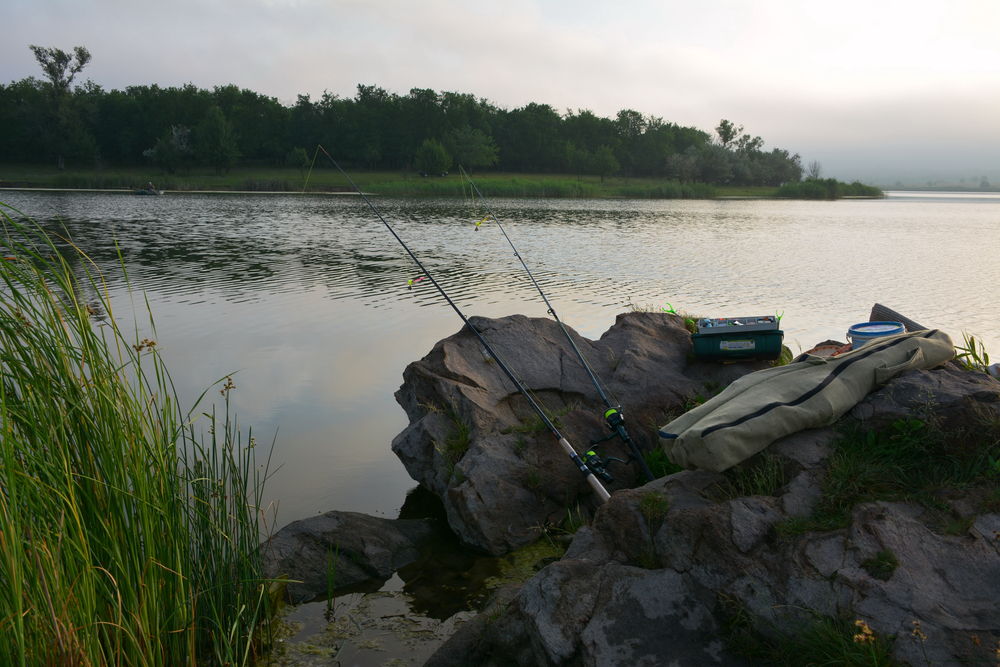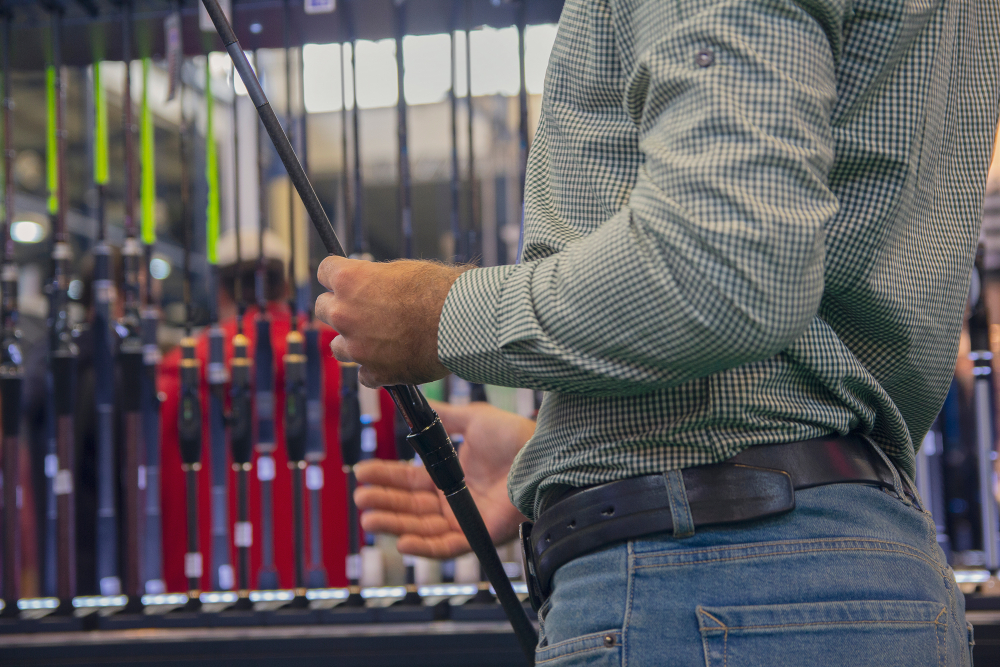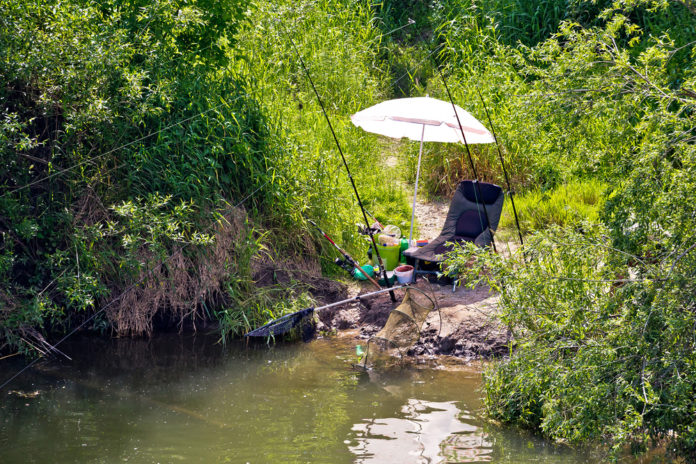What Makes Good Fishing Spots So Sought After?
The more fish you catch, the more enjoyable your experience is going to be. As much fun as it is to get out on the water and wet your fishing line with friends and family, actually catching a fish – or two, or ten – is the greatest thrill in the sport. A close second, however, may be successfully finding good fishing spots after taking the time to do your research beforehand.
Technology has changed the way anglers look for locations. For example, when hunting for pike fishing spots, it’s not just about boating around until you find a weed bed. You can still get success that way, but you can save a lot of time and guess work consulting a hydrographic map for depths and structure or using sonar to see where fish are hanging out. And if you find many spots on a large, unfamiliar lake, you can use a GPS to mark your locations so you don’t have to completely rely on memory for future fishing trips.
Because of the effort and satisfaction that comes with finding a fishing spot, anglers tend to guard their secrets closely, refusing to give out information to protect their find. It makes sense, as no one wants to see a prime fishing location overrun and overfished. As a result, trying to get tips on locating the right spots from someone else can be tricky: all the more reason you should become proficient looking on your own, which is what this article is all about.
You don’t have to rely for help from an expert in the area, or just cast your line in the water and hope you get lucky. If you want to catch more fish, you must get better at finding the best fishing spots yourself.
How Do You Find The Best Fishing Spots?
You have to answer three important questions first before you can begin to research: what fish am I going for? What is the weather like? And, what kind of body of water am I fishing in? The answers will change based on what you’re looking for. For example, when looking for lake trout fishing spots on a smaller lake in the summer, you want to find deeper locations near underwater ledges. That changes in the spring after the ice melts when you need to fish at a much shallower level closer to shore. Learning the general tendencies of your quarry will help a lot with the research stage.
A fishfinder is a great tool to mark fish. Many units now come equipped with GPS capability.
Once you’ve answered those basic questions, it’s time to really look with more detail at the lake/river/part of ocean you will be fishing in. Get a hydrographic map and take note of all the points of interests you can. You’re looking for things like points off islands and bays and quick changes in depth. If finding a paper map is not possible, using a resource like Google Earth can help you immensely. There are fish finders and onboard GPS systems that now allow you to input co-ordinates via Google Earth to mark waypoints of potential hotspots, allowing you to follow your own map once you’re on the water.
To supplement your own findings, be sure to consult fishing reports in your area. There are many websites that reveals good tips and techniques, and though you may not pinpoint that perfect freshwater fishing spot, you’ll at least get a better idea of where fish are congregating. And it never hurts to try contacting anglers in the area about potential fishing spots, you may just find somebody willing to share a secret.
After all your pre-fish research is done, it’s time to hit the water. When going to a new body of water with your boat, it’s a good idea to know exactly where the access point is and where you can park your vehicle and trailer. Be sure to check out online fishing reports or even topographical maps of the area to find where those locations are.
Once you’re finally at your potential hotspot, it’s just a matter of testing your research. As you fish you may find new spots through trial and error, and if that’s the case it’s smart to carry along a GPS to make waypoints of new areas, take note of the longitude and latitude for that saltwater fishing spot, or mark areas you find on a paper map.
What Makes A Good Fishing Spot?

You’ll know you’ve hit the perfect spot when you can barely put your rod down without hooking onto another fish. A lot of fish are alike, looking for the same area to school based on food and shelter needs. Where there’s a swarm of baitfish, shrimp, crayfish, or whatever, bigger fish will follow. And wherever there is shelter from the sun, hiding places from predators, or coverage to ambush from, fish will flock to those places as well. It’s just a matter of knowing where those fish are gathering, and it often depends on the species.
When looking for catfish fishing spots for example, you’ll need to look more for where they may shelter rather than focus too much on the depth of the water. Catfish like to stay hidden during the day under anything from submerged logs to man-made structures like old tires. They come out in the open at night, but remain on the bottom. The best spot for catfish during the day is calm water out of the sun with piles of logs and other debris under water. This is one of many examples, and the more research for a certain fish you do – through reports, online forums and blogs, etc. – the more success you’ll have.
General Guidelines For Good Fishing Spots
Fly Fishing Spots
Depends a lot on the movement of the water. Some fish don’t always like the fast current of a river and may opt to rest awhile in a slower patch. Find a sandbar or other depression in the water that will generate slower moving currents as these serve as resting places for fish.
Ice Fishing Spots
Fish and especially trouts tend to move slower in colder weather and move closer to shore, even if they enjoy deep open water, like lake trout. Look for points offshore for best results. Find yourself a good quality depth finder that can mark activity underwater. Like fly fishing, mobility is sometimes the key thing. If you dig a hole or two and are not using an ice hut, don’t be afraid to get up and move somewhere else if fish aren’t biting.
Sea Fishing Spots
If you’re new saltwater fishing, oftentimes it’s best to charter a boat and go with an expert. At the very least, you’ll pick up some tips on where good hotspots are! There is a huge variety of fish to catch, and while targeting a specific species is always a possibility, there are some general things to look for that’ll increase your options no matter what you’re trying. The main thing is to always consider where food for the fish will be. Best case scenario is to fish near a reef where small fish are populous, therefore attracting bigger game fish in the area. Much more than in freshwater fishing, you’ll need to develop a sixth sense to find a good fishing spot on the sea. For example, look for where birds are flocking to near the water .Birds eat fish too, so go where they go and mark it on your GPS or map for future reference.
Try and learn what fish are eating
If you’re trolling for rainbow trout and you’re not catching much, take a look at your bait. You may be wasting your time attaching a worm to your line and going deep. At certain times of the year, like in the summer, freshwater rainbows swim close to the surface and prefer eating small insects rather than bigger targets. Your bait should reflect this. You can learn what fish are eating talking to local experts, reading fishing reports, or if you manage to catch one and bring it home with you, checking the stomach contents for clues. Where a food source swims in the water is where the fishing spots will be.
Ask for advice at bait shops

Few know as much about fishing in the area as bait shop owners and employees, especially ones that have been in the same place for a long time. Anglers in the area all come through these shops and will often tell their stories of success. Bait shop workers are much more inclined to pass this information off to you, even specific locations, as it may mean better business. They’ll also have a pretty good idea of what’s working at what time.








